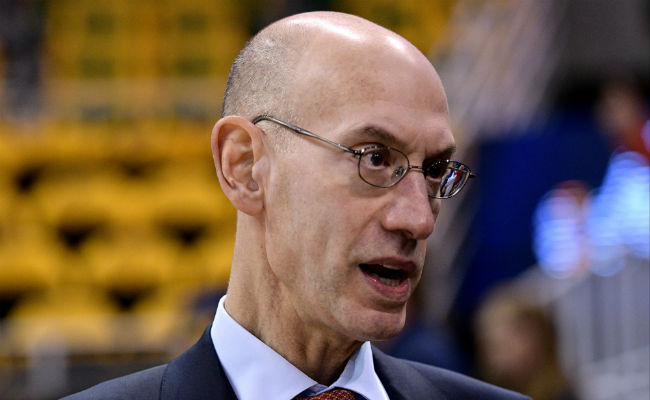
The NBA continues to tweak its rules as the offseason rolls on. The Association announced from Las Vegas today that it’s changing a number of late-game rules in an effort to speed up play and create more exciting finishes. Fresh off the heels of moving the trade deadline to before the All-Star Game, the rules further tweak how you’ll be watching basketball come this fall.
The main points of emphasis? The elimination of a distinction between a “full” and “team” timeout, timeout distribution spread out throughout the entire game and fewer timeouts in the final minutes of each game. Here are the rule changes in full:
— Each team will have seven timeouts per game, with no restrictions per half
— All team timeouts are 75 seconds. No “full” 90-second timeouts and “20-second” timeouts that actually lasted 60 seconds.
— All four quarters have two mandatory timeouts, taken after the first stoppage under the seven- and three-minute marks.
— The under-nine-minute timeout in the second and fourth quarters have been removed
— Each team can take up to four timeouts into the fourth quarter
— Each team can take up to two timeouts after the 3-minute mark of the fourth period or the resumption of play after the second mandatory timeout of the fourth quarter
— Each team will have two timeouts per overtime period
There were also some changes made to the flow of the game itself. Referees can now assess a delay-of-game of a shooter goes beyond the 3-point line between free throw attempts. And halftime will last 15 minutes, with a delay-of-game penalty issued to a team that’s not ready to play right after the halftime clock expires.
“These changes will help us fulfill our goal of improving game flow and pace of play,” Byron Spruell, NBA president of league operations said in a league release. “Fewer stoppages and less time without action, especially at the end of a game, will further enhance the viewing experience for our fans.”
Limiting timeouts in a game’s final minutes will likely speed things up a bit, but the more interesting angle here is that taking timeouts throughout the game just got a bit more interesting for coaches. Unused timeouts at the half were once a luxury in the NBA, but now a team that’s desperate to swing momentum or correct some issues with play early on might be sacrificing some flexibility with their timeouts later in the game.
Whether it actually makes the game flow better won’t be something we notice until the season tips off, but the NBA is being much more proactive about fixing this than some other basketball organizations like the NCAA.






